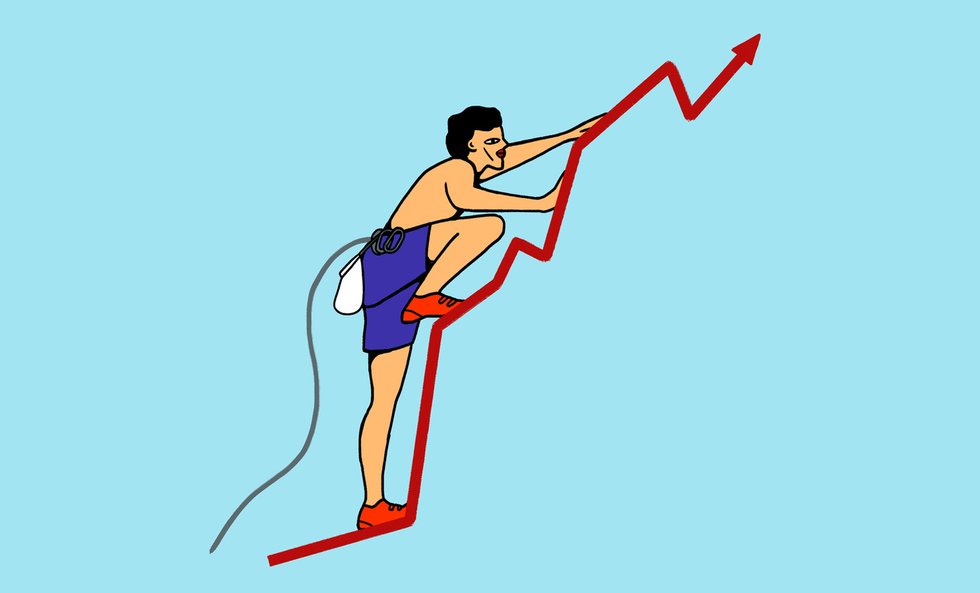Future of work: are you ready for the Passion Economy?
Sep 04, 2020
6 mins


Over the past four decades, most workers have been losing out in terms of negotiating power and wages. Globalization, the decline of unions, and automation have made it significantly harder for the middle class to thrive. Whereas the industrial economy of the 20th century required workers to conform—you had to replicate processes and be reliable—today’s economy requires that you be unique and different. Indeed “not being a commodity” may well be the only way to thrive in the new economy.
The passion economy is a concept that is all the rage in Silicon Valley and among creative freelancers, which is probably why the concept could be criticized for being “elitist”. But Adam Davidson’s book, The Passion Economy (2020), isn’t about Silicon Valley entrepreneurs and creative content creators, it is about more “ordinary” small businesses “riding the waves of change”. Drawing from several stories of small American businesses, Davidson aims to make the point that “large numbers of regular people can thrive by pursuing something they enjoy”.
Adam Davidson is a journalist focusing on business issues for NPR (National Public Radio). He created a popular podcast called Planet Money and he also writes about economics in The New York Times and The New Yorker. In his book, he proves a remarkable storyteller. The stories he chose to tell are original and compelling. He uses them to encourage his readers to apply strategy to their individual work lives, and find a niche where they can profit from their passion.
“The same forces—technology and trade—that destroyed the widget economy have given birth to what I call the Passion Economy.”
“A commodity is an undifferentiated product that is easily copied and replicated by others. (…) Commodity businesses are price takers, meaning they get paid whatever the market happens to be. (…) By definition, a passion business differentiates itself from others so that it can charge a unique price that represents its unique value.”
- Adam Davidson in The Passion Economy.
Why the “widget economy” is making workers miserable
Davidson describes at length what characterized the 20th-century mass economy: “removing inefficiencies so that the same thing could be made more cheaply and overseeing research and development so that the products became ever so slightly better each year. That was, in fact, the heart of the twentieth-century economy. Economists call it production-side growth, which means that most companies, most of the time, made their profits by cutting the cost of production.”
For workers, this economy meant that it was best to conform, to follow the rules, and show employers that they could accommodate their needs. Not following the rules meant taking risks that could jeopardize your livelihood. But becoming a mere cog in the well-oiled machine of the mass economy came with its trade-off: job stability and a decent pay.
In fact, the most important thing to be considered an attractive worker was to send future employers the right signals to convince them of your ability to execute obediently: a previous experience doing the same thing, the right degree, a “normal” outlook… And conforming was an attractive proposition for the most part of the last century because “the economy worked remarkably well for so many people. It was the only time in history that the poor became richer more quickly than the rich did.”
Davidson calls the twentieth-century economy the “widget economy”. A widget is a manufactured device and an abstract unit of production, something that isn’t unique or singular. As such it epitomizes the industrial age, when efficiency and growth came with standardization and scientific management.
Alas the period of widget prosperity came to an end roughly four decades ago. “This period of benign, widely shared economic prosperity began to fall apart in the late 1970s”. Widget jobs are more and more precarious. Conformity is no longer rewarded with stability and wealth. Workers find it increasingly hard to maintain their purchasing power. Faced with global competition, small businesses struggle to survive in the widget economy.
How small businesses succeed or fail
Davidson’s book does not focus on large corporations. Nor does it address the needs of the “creative classes”. Instead it zooms in on what makes small businesses succeed in today’s economy. After a lot of research, the author found that surprisingly few studies or books have been published on the question of what makes a small business succeed or fail. Indeed economics professors spend more time studying large firms.
For Davidson, the key is to apply the field of strategy, originally invented for the sake of industrial empires, to small businesses. In the widget economy, small businesses did not need strategy: “simply being a company that sold something was often enough to keep growing”. Today by contrast applying strategy to a business is a matter of life and death. He cites MIT professor Scott Stern who translated the work of 1980s strategy guru Michael Porter to the concerns of smaller businesses and entrepreneurs.
“What are you selling? Who most wants it? Why do they want it? How do they pay for it? Strategy is more important now than it was in the widget economy of the twentieth century because the answers to these questions are more complex and change more often.” The word strategy may sound intimidating, but Scott (and Davidson) are convinced it doesn’t need to be. Applying strategy to your business can be divided into four steps:
- Step one consists in understanding how your business adds and captures value, and choosing between a high-cost, high-margin strategy or a low-cost, high-volume one.
- Step two is about choosing your customer. “Imagine a person or business who would most appreciate and benefit from your product or services”.
- Step three is to pick your competition. It means deciding how your product or service will be viewed by your potential customer and what other products they will compare it to.
- Step four is to focus on how you’ll capture the value from your customer, understand how the value chain in your industry works, whether you will target wholesalers, local stores, or the end customer, whether you’ll sell individual units or in bulk, etc.
The 8 rules of the passion economy
Rule #1: Pursue intimacy at the scale
Today’s technologies make it possible to combine the best of the 20th-century mass economy (machines and scale) with the best of the 19th-century (craftsmanship). “You may need to get creative and experimental and be willing to reach out to a lot of people—who might at first, seem uninterested in whatever it is you have to offer.”
Rule #2: Only create value that can’t be easily copied
It’s best to focus on niche needs that may not be of interest to large corporations, focuses on opinionated customers, and things that are hard to do. “The moment one of your products or services takes off and becomes widely copied, you should begin abandoning it and looking for the next thing.”
Rule #3: The price you charge should match the value you provide
“Price should drive costs, not the other way around.” We were taught that costs determine prices, but this is backward. Also, it’s best to forget about market prices because these are for commodities, not passion products. And change your price constantly because passion and needs tend to shift.
Rule #4: Fewer passionate customers are better than a lot of indifferent ones
“Value pricing requires selling to the right people.” Once you have identified your niche and your target customer base, you will naturally develop a reputation among that base, and the best customers will often come to you by themselves, without you needing to deploy an aggressive sales strategy.
Rule #5: Passion is a story
“Whatever you’re selling, you’re selling a story, and it better be a true one.” Value is rarely something that can be measured objectively. It depends on the story you tell. But if that story is a lie, it is dangerous for your business: “maintaining the lie requires an extraneous effort that doesn’t increase your core value.”
Rule #6: Technology should always support your business, not drive it
As technology and automation become omnipresent, personal, human relationships become ever more critical. “Technology-driven scale creates the space for businesses built on value and passion.” It becomes possible (and necessary) to serve a small niche that is hard to scale to protect yourself from the competition of giant firms.
Rule #7: Know what business you’re in. And it’s probably not what you think
“The core thing you are selling is the real value you can bring to a customer who craves your offering. Often, a value-delivery system is tied to a particular moment in history.” It’s more and more important to understand where the value is and become experimental in the ways to capture that value.
Rule #8: Never be in the commodity business, even if you sell what other people consider a commodity
“A commodity is an undifferentiated product that is easily copied and replicated by others. Commodities are widgets.” Commodity businesses are dominated by large corporations that use automation and/or outsource their production to countries where labor is cheaper. By definition, a passion business is about a unique product.
Stories to inspire you to invest in your uniqueness
To make his point about the passion economy and the opportunities it offers individuals and small businesses, Adam Davidson tells the original, compelling stories of several American businesses. In a way, his storytelling skills provide a sort of mise en abyme of Rule #5 (Passion is a story).
There’s the story of an unhappy accountant who turns his business around and escapes the “widgetization” of his industry. Then there’s the thrilling story of an old dairy brush company that leaves its industrial past behind to embrace craftsmanship. And another one about an Amish business that specializes in horse-drawn agricultural equipment for Amish farmers. And a few more.
The book reads like an entertaining collection of stories about “ordinary” businesses that found a way to be successful in the twenty-first century. Davidson’s book is optimistic and inspiring. It is also quite original in the sense that it doesn’t focus on startups’ scalable, digital models. A passionate business does not need to be a startup. This message contrasts with an abundant future of work literature that may be regarded as elitist because it targets mostly IT developers, startup founders, or artists.
However, it could be said that the problem with compelling success stories is that they make it seem like it is easy to thrive in the passion economy. The Passion Economy is definitely worth the read, but expect a collection of compelling success stories rather than a “how-to” book.
Illustrations : Pablo Grand Mourcel

More inspiration: Laetitia Vitaud
Future of work author and speaker

Age does matter, at work and in the White House
What we've learned from the 2024 presidential elections about aging at work.
Sep 09, 2024

Can companies avoid a brain drain as retirements surge?
Bye bye, Baby Boomers. Hello, knowledge exodus?
Jun 12, 2024

Workplace anxiety: Navigating the future of work in an anxious world
Anxiety has taken center stage in our modern world. How is it shaping the future of work? And most of all, what can we do about it?
May 20, 2024

Why recruiters should hire more ex-freelancers
While freelance and salaried work can seem worlds apart, they may have more in common than you think.
May 02, 2024

How women over 50 are reinventing their careers and the future of work
Women in their 20s struggle to be taken seriously, while middle-aged women battle discrimination... So how are women over 50 reinventing the wheel?
Apr 02, 2024
Inside the jungle: The HR newsletter
Studies, events, expert analysis, and solutions—every two weeks in your inbox

